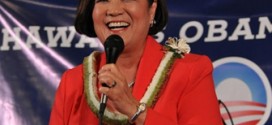By Josephine Liang
Making up around 5% of the nation’s whole population, and growing at a rate of 46% from 2000 to 2010, Asian Americans are a significant slice of the American pie. In the 2012 election, 73% Asian Americans cast their votes for the re-election of president Obama, which is the highest percentage ever for any candidate. However, as the fastest growing racial group, there are only a handful of Asian Americans currently in public office.
While interest in local politics has been on the increase, Asian American involvement has been historically low, which is a situation that have not changed much over the recent years. This is a curious situation, considering that Asian Americans have a higher socioeconomic background and education level than average, which normally correlates to higher political participation.
At the same time however, there are many hurdles facing Asian Americans who attempt to seek public office.

Dr. Bilal Ayyub, who was recruited to run for Maryland Senate, withdrew from consideration for the interim vacancy in August. He represented Montgomery County, which is a majority minority county (minorities make up the majority of the population). Despite Montgomery County’s diversity, it has yet to elect or appoint a minority citizen to any of its eight senate seats. Ayyub wanted to close this disparity with his involvement and encourage other minority members of the community to run for the June 2014 term. However, Ayyub found that most members of the committee interviewing the candidates had already committed their votes to his opponents, and were not considering the candidates with an open mind. He also received discouragements and urges to withdrew from various people, including elected officials.
“The primary hurdle [for Asian Americans running for public office] is the mindset of those who are apprehensive about inclusion,” said Dr. Ayyub, “this is not a problem unique to Asian Americans, and is shared with other underrepresented communities.”
Furthermore, “Asian American” is also a term that umbrellas over 45 distinct ethnicities. Minorities such as Laotian Americans and Cambodian Americans are excluded by many mainstream censuses; over one third of these two groups do not have a high school degree, and have a poverty rates as high as African Americans. These factors may contribute to a lower involvement in politics. The exclusion of such groups is an example of a concerning habit of stereotype of Asian Americans as the “model minority.”
Another hurdle could be the cultural mindset, especially resistance from family when young Asian Americans express interest in careers in public service. “As we live in a society with few Asian-Pacific Americans (APA) public service leaders in the spotlight, Asian American families recognize the racial gap and are skeptical,” commented Heidi Hong, recent college graduate and current fellow of the Conference on Asian Pacific American Leadership (CAPAL), “many older generations of APAs from immigrant and refugee backgrounds have experienced the trauma of war and political persecution, and they (understandably) are disillusioned with politics and want their children to pursue ‘safer.’” Asian American parents hence subtly push for professional careers as doctors and lawyers, where income is more stable and out of the public eye.
Yet young Asian Americans have growing opportunities to get involved in the public sector. Asian-Pacific Americans organizations received much more public and financial support for bilingual voter outreach in the 2012 election, and young APAs are able to use the internet as a powerful tool to educate each other about voting and public policies through blogging and other social media. Organizations like Congressional Asian Pacific American Caucus (CAPAC) and CAPAL helps Asian Americans interested in politics through education, exposure to policy issues, network, leadership development, and meet with like-minded students and community members.
“[APA] students are building more coalitions with each other both on campus and with community-based and national organizations because they are beginning to understand the political power of organizing and forming coalitions,” said Hong, referring back to her experiences in college, “because Asian Americans are the fastest-growing racial group, we are beginning to see more institutional efforts to reach out to the APA community.”
“The involvement [of Asian Americans] can be increased by encouraging members of the community to belong to political parties, and to volunteer in campaigns and other political events in order to have the exposure and access to opportunities,” said Ayyub, “we are in need of leaders to represent this emerging, diverse and vibrant majority.”
 Asian Fortune Your source for all things Asian American
Asian Fortune Your source for all things Asian American

